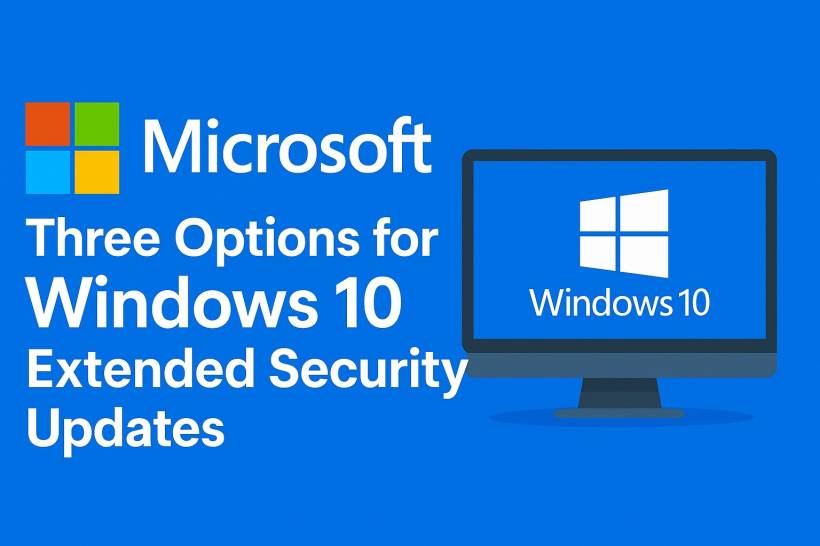With Windows 10 officially reaching end-of-support on October 14, 2025, many users have been wondering what's next. Microsoft has now laid out its plan—and it's offering not one, but three different ways for consumers to continue receiving security updates. Surprisingly, one of them is even free, though there's a small catch.
What's Happening with Windows 10?
Microsoft is winding down support for Windows 10 after more than a decade of service. That means no more critical security updates after October 2025—unless you opt into what's called the Extended Security Updates (ESU) program.
Traditionally, ESUs were something only enterprise customers could purchase. But this time, Microsoft is extending the option to everyday users at home as well.
Option 1: Pay for ESU Access
The most straightforward route is to simply pay US$30 (around RM141) for a year of security updates. You'll get all the critical patches to keep your system protected for another 12 months.
Option 2: Use Microsoft Rewards
Don't feel like paying cash? You can redeem 1,000 Microsoft Rewards points instead. If you've ever used Bing, bought something from the Microsoft Store, or played Xbox games while signed in to your account, chances are you've already earned some points.
This option gives you the same level of coverage without opening your wallet—just make sure you've banked enough points first.
Option 3: Go "Free" with Windows Backup
Here's where things get a bit more interesting: Microsoft is offering a free ESU option if you agree to activate the Windows Backup feature. This syncs your system settings and personal folders like Documents and Pictures to Microsoft OneDrive.
While this sounds great on paper, it's not entirely "free." OneDrive only includes 5GB of free storage by default. If you have a lot of data, you may quickly hit that limit and be nudged into purchasing more storage. So while you're not paying for ESU directly, you might end up paying for cloud storage instead.
Easier Enrollment Coming Soon
Microsoft is also rolling out a new setup wizard in July to make enrolling in ESU as simple as a few clicks. Once you pick an option—payment, points, or Windows Backup—your PC will be automatically enrolled.
This wizard should be available to everyone by mid-August, so you'll have some time to explore your options before the official support deadline arrives.
What You Still Get Without ESU
Even if you don't join ESU, your PC will still receive antivirus updates via Microsoft Defender and security patches for Microsoft 365 apps until 2028. But the operating system itself—Windows 10—won't get any new defenses after October 2025 unless you're part of ESU.
For business and enterprise users, Microsoft offers up to three years of paid ESU coverage, keeping those systems protected through to 2028.
Cloud and Virtual PC Users Get It Free Anyway
If you're using Windows 365 or accessing Windows 11 through a Cloud PC, Microsoft will throw in ESU for free. It's part of the company's broader shift toward cloud-based services.
Final Thoughts: Time to Upgrade or Extend?
Whether you choose to extend Windows 10's life or upgrade to Windows 11, the clock is ticking. Microsoft will likely increase notifications urging users to make a move in the coming months.
If your current PC can't handle Windows 11, this ESU program gives you some breathing room—but it might also be the sign you've been waiting for to explore newer hardware or embrace the cloud.





Comments